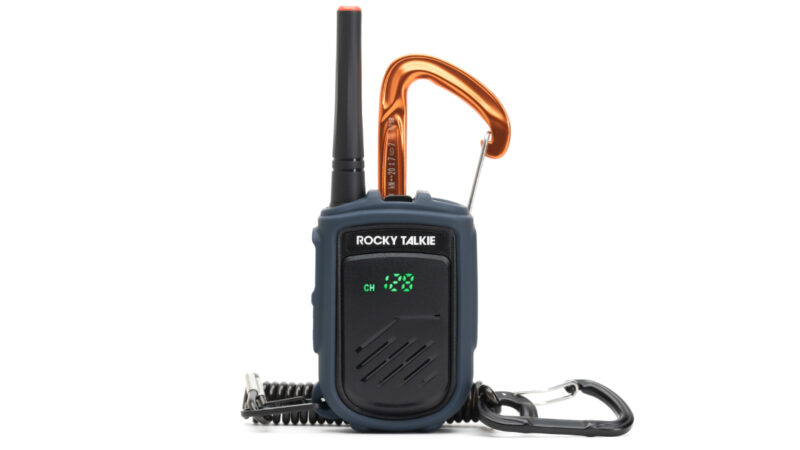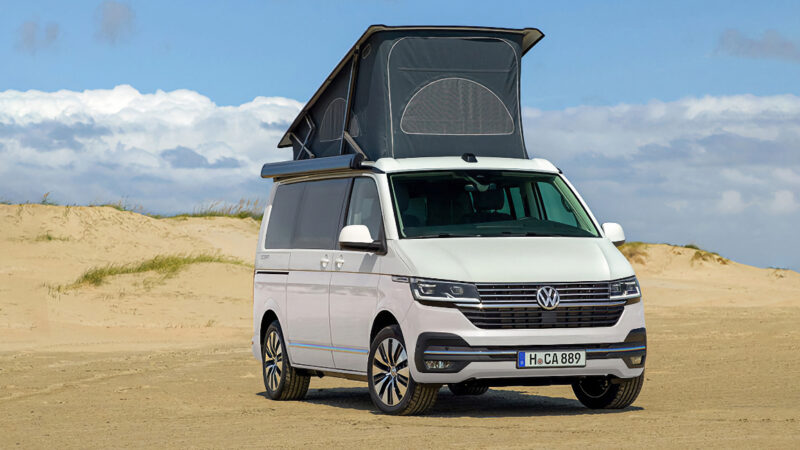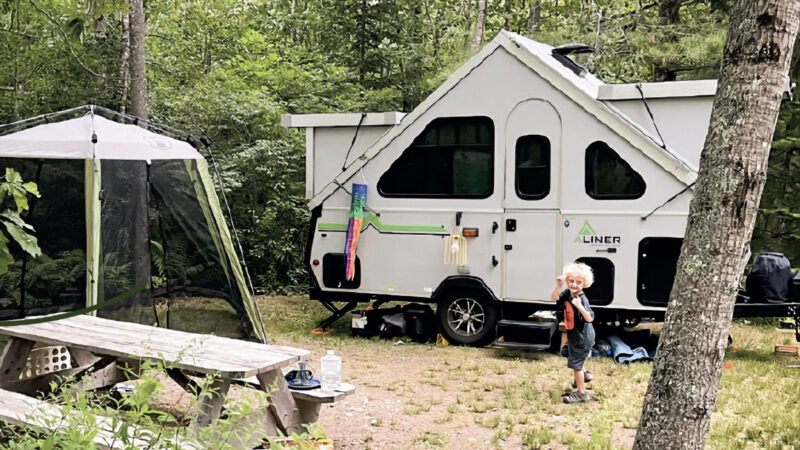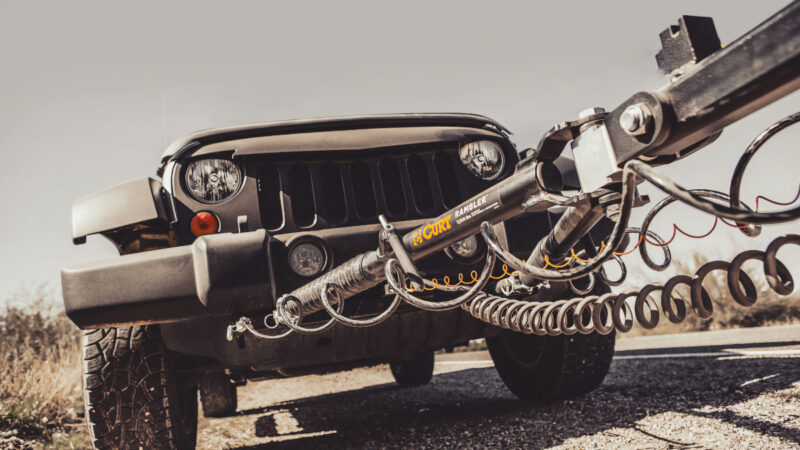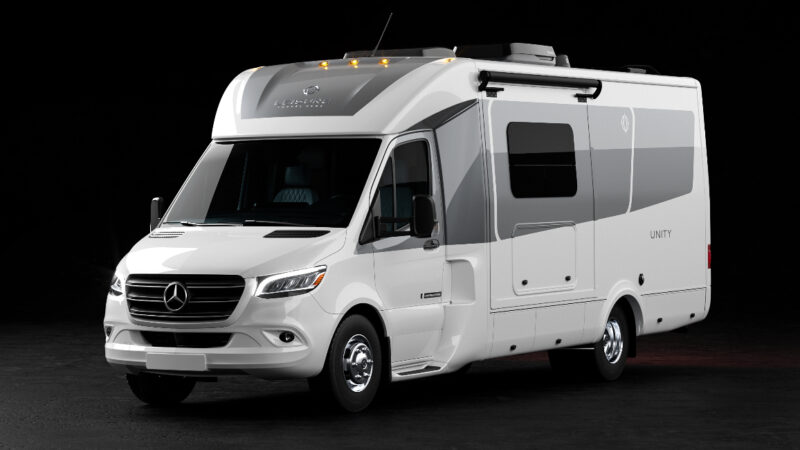Bluetti A300+B300 Power Station Review: Modular and Versatile
A relative newcomer to the portable power station market, Bluetti has been making a lot of waves in the industry over the past few years. The company’s AC60 model is one of the most rugged and well-designed products we’ve seen in this space, and we loved the AC180 when we reviewed it a few months back. The tech startup has now added a powerful new solution to its lineup, bringing modular energy storage to the masses.
Recently, Bluetti started shipping its AC300 power station and B300 expansion battery, which work in conjunction with one another to create an expandable energy ecosystem. The two units are designed for use at home, the jobsite, campground, or any other place you need an abundance of power. But unlike similar offerings from the competition, both devices are required to get the most out of the system.
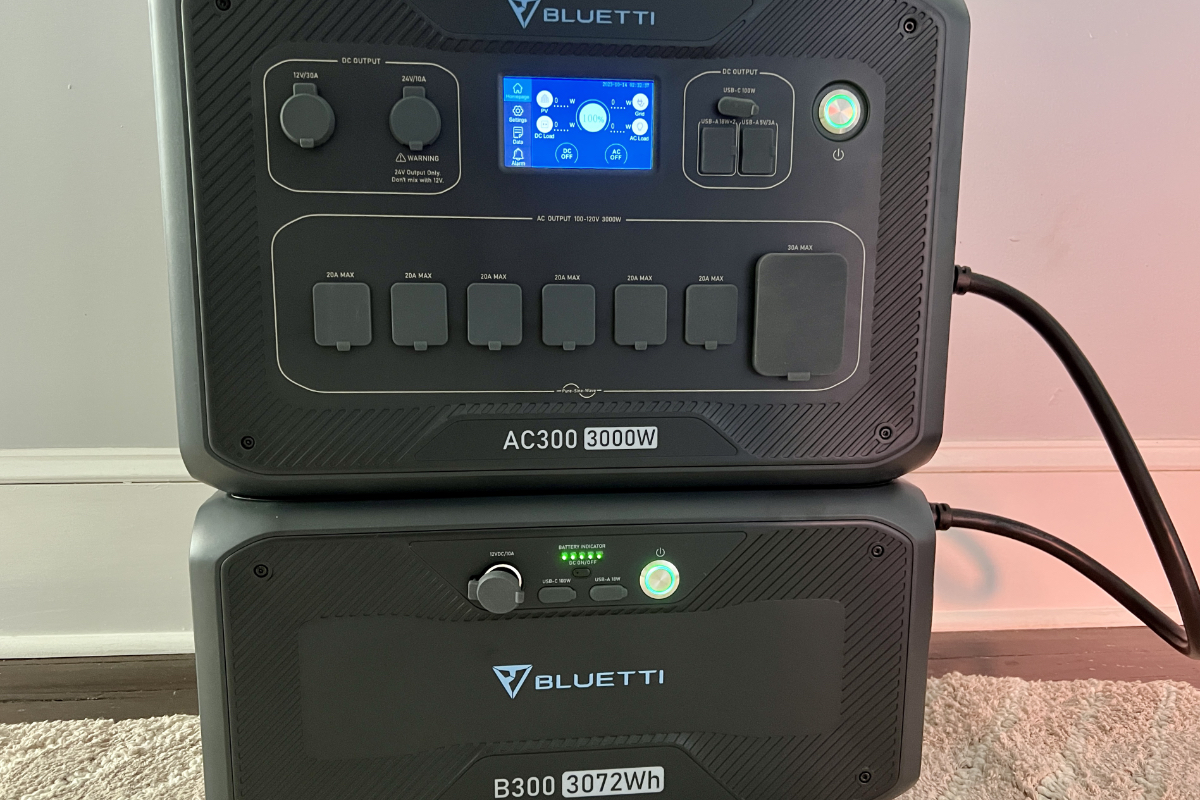
Photo Credit: Kraig Becker
Power Station + Battery Pack
Before we discuss the technical specs of the AC300 power station and B300 expansion battery, we need to first mention the symbiotic relationship of these devices. It is important to note that neither of those units is particularly useful on its own, and both are required for the energy ecosystem to function to the fullest. That’s because Bluetti didn’t put a battery of any kind inside the AC300, choosing instead to create a powerful and portable inverter. That means the power station must connect to at least one B300 battery pack at all times, or it won’t even power on.
This is in direct contrast to how the majority of the competition has designed their modular power systems. Most other companies have created a stand-alone power station that functions independently of any expansion batteries, allowing users to choose how many additional power cells—if any—they add to the system. In Bluetti’s case, you’ll need at least one B300 to make the AC300 work. Thankfully, the two devices are sold as a set, so you get everything you need with a single purchase.
A fully functional power station that works without needing an external battery has some advantages, of course. For example, it can function entirely on its own when separated from the expansion packs, making it easier and more convenient to take with you wherever you wander. It can also make the initial investment a bit less pricey, as you’ll only need to purchase a single device. That isn’t the case with the AC300, which can’t really do anything without a B300 attached.
On the other hand, if you’re building a modular energy ecosystem, there are some upsides to Bluetti’s approach. It does provide a substantial amount of power no matter where you go, and should the AC300 inverter ever have issues, it should be easier and less expensive to replace compared to a full-fledged power station. And while tipping the scales at just under 80 pounds, the B300 is a hefty device to lug around; the AC300’s lack of batteries makes it relatively light at just 47 pounds. That is lighter than a similarly-equipped device that also has integrated batteries.
In the end, Bluetti’s design decision doesn’t impact overall performance, but it is essential to understand how it works before moving on.
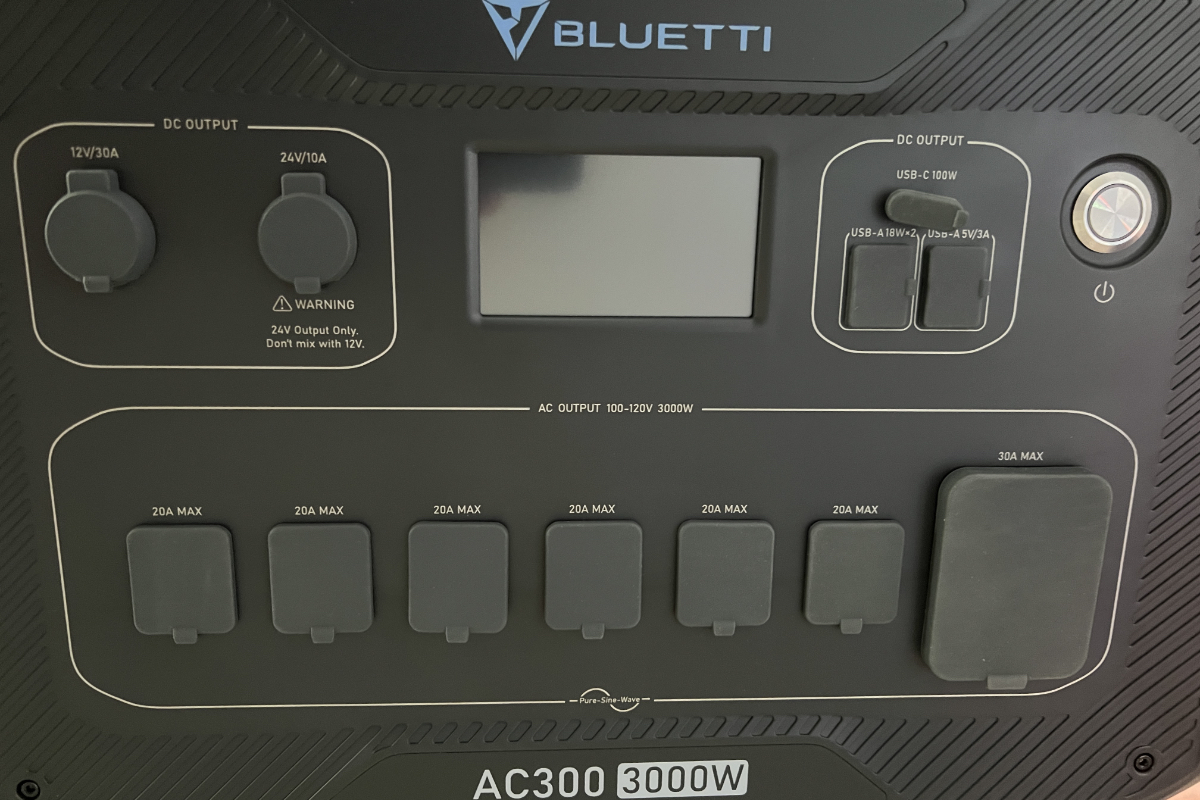
Photo Credit: Kraig Becker
Powerful Specs
Because the AC300 is, first and foremost, an inverter, Bluetti has managed to outfit it with some exceptional specs. The power station offers 3,000 watts of pure sine wave energy, with a peak surge of up to 6000 watts when needed. This allows it to run residential-style appliances, including refrigerators, space heaters, and air conditioners. It also allows the system to serve as a backup power source for the home, automatically taking over during a blackout.
The B300 battery’s technical specs are equally impressive. Each expansion pack adds 3,072 watt-hours of capacity, with the option to link up to four batteries for a whopping 12,288Wh. That’s enough to keep an entire home running for several days without external power. It is even possible to link two AC300 inverters and two B300 batteries to achieve 240V split-phase bonding power. That gives the system enough capacity to handle appliances with a very heavy energy draw, like an electric dryer.
The AC300 and B300 connect to one another via a heavy-duty proprietary cable, which is included in the box. Once linked together, the inverter powers on, providing users with electricity to charge or run their devices and appliances. The inverter comes with six standard 120V AC power plugs and a 120V 30-amp plug. It also has the requisite 12V DC RV port and a 24V vehicle port, both of which are handy to have but seldom used. Two standard USB-A ports and two USB-A 18W quick charging ports are also included, along with dual wireless charging pads located on the top of the device. Sadly, there is only one USB-C 100W PD (power delivery) port on the inverter itself, which is somewhat disappointing. Thankfully, there is an additional USB-C port—along with a USB-A and 12V port—on the B300.
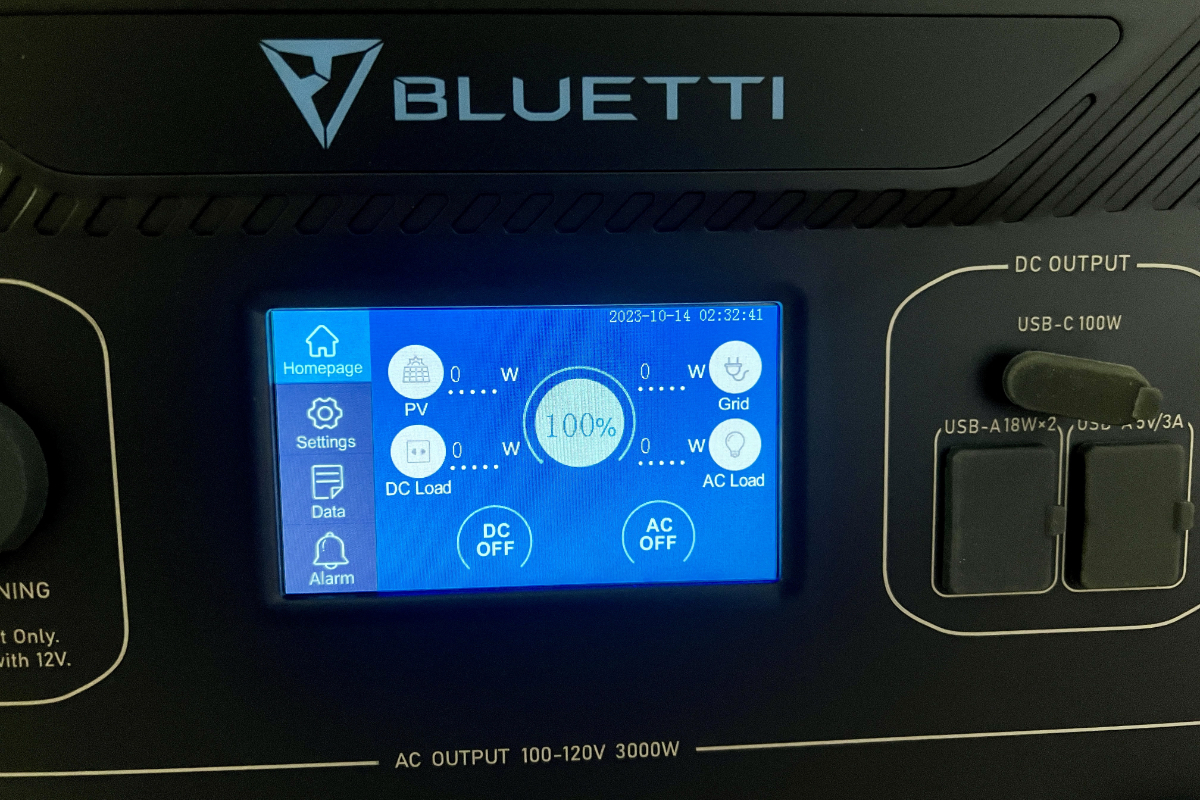
Photo Credit: Kraig Becker
Charging the Ecosystem
Bluetti didn’t skimp on the options for charging the AC300 + B300 system. There are seven distinct ways to power the units, including directly plugging them into an AC wall outlet and using solar panels or a 12V car port. But the system can also recharge via a gas-powered generator or by drawing electricity from a bank of lead-acid batteries. It is even possible to utilize more than one of these methods at the same time to significantly boost charging speeds. For example, you can plug the devices into a wall outlet and connect them to solar panels to achieve a staggering 5400W of combined power input.
Charging speeds are blazingly fast, ensuring downtime is kept to a minimum. When plugged into a 120V wall outlet at home, our test unit went from nearly depleted to completely full in about 5.5 hours, which is quite quick for a power cell of this size. Under optimal conditions, Bluetti’s 420W solar panels should offer similar performance using multiple panels and with good exposure to direct sunlight, but location, time of day, cloud cover, and other variables can impact efficiency.
Power input and output can be monitored on the AC300’s clear, bright, easy-to-read LCD screen. The system is simple to understand, with all pertinent information clearly labeled. Best of all, the display is a touchscreen, making it incredibly easy to interact with the device and adjust settings. We’ve seen touchscreens on a few other power stations in the past, but Bluetti’s is the best implementation we’ve seen so far. Hopefully, others will follow suit in the future.
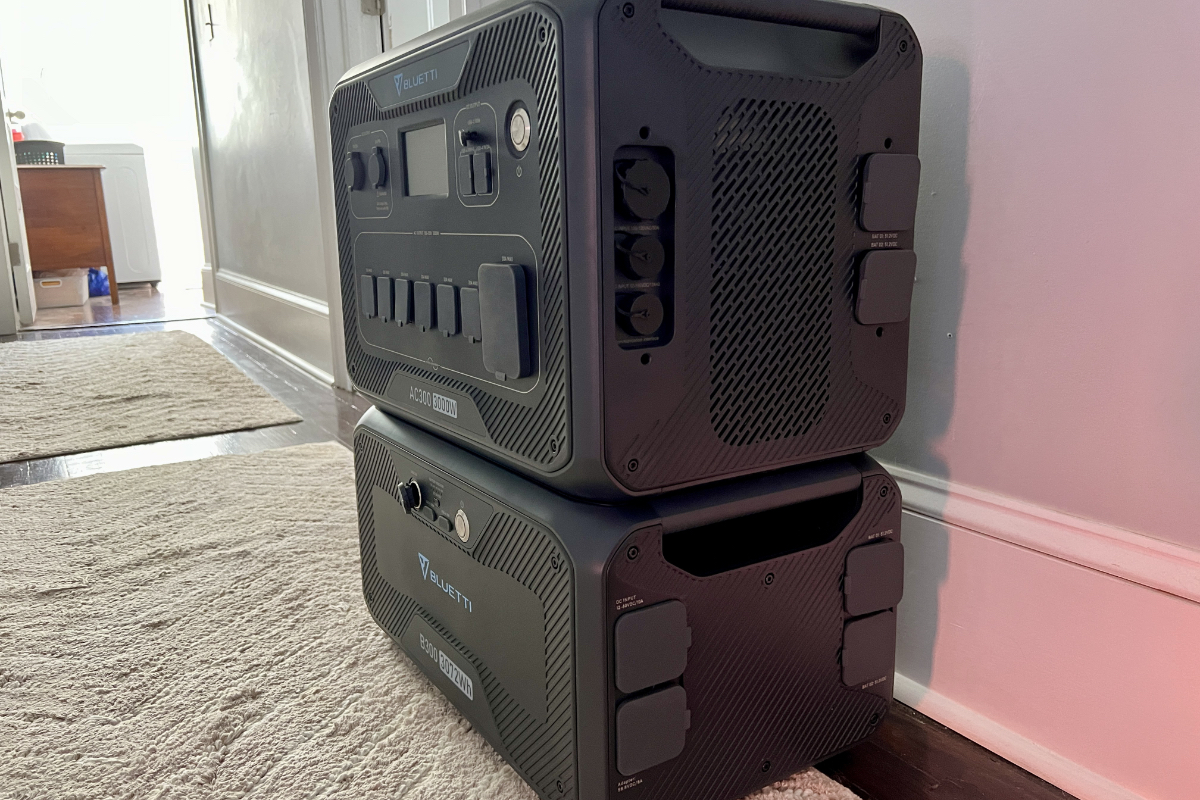
Photo Credit: Kraig Becker
Modular Performance
All of these features and specs don’t mean much if the device doesn’t deliver on its promise of efficient, cohesive, and versatile power. Fortunately, the AC300 + B300 delivers in that department and then some. The two units work seamlessly with one another, creating an energy ecosystem that is easy to set up, charge, and maintain, especially if you’re looking for a backup power solution for your home or an option for bringing clean energy with you on your RV excursions.
As with other modular power systems, Bluetti has made upgrading and expanding its offering extremely easy. Users can simply add additional B300 battery packs as needed, plugging them directly into their existing stack to expand capacity. The AC300 automatically recognizes these new resources as they come online. And while some of the competition has been offering similar expandability for a while now, this is an elegant solution that doesn’t require a degree in electrical engineering to get working.
It is worth noting that Bluetti uses LifePO4 batteries in the B300, which improves the safety, energy density, and lifespan of the device. These types of power cells are much less prone to catching on fire compared to lead-acid models, and they can store more power, too. Better still, they can continue to work for years, even with daily use.
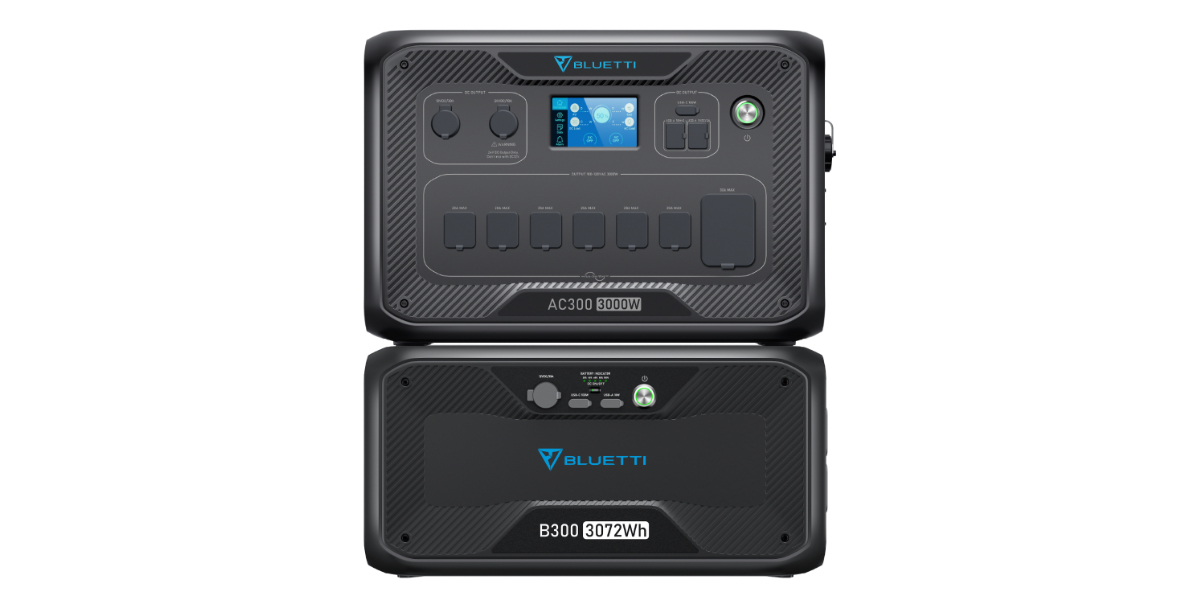
Photo Credit: Bluetti
Impressive Quality and Value
In addition to its technical performance, the AC300 + B300 combo is impressive in other ways. For instance, both units exhibit excellent build quality that extends not just to the hardware but the accompanying cables as well. The inclusion of rugged port covers is a nice touch, too, keeping dirt, sand, and other debris from reaching the delicate circuitry inside. This is another feature commonly found on Bluetti devices that others in the industry could adopt.
As is common in portable power stations today, Bluetti’s devices support managing and monitoring via a smartphone app. This allows you to check current battery levels, rates of power in and out, and more. This comes in very handy at the campground, but it is indispensable when using the AC300 + B300 system as a home backup option. You can even check on your power status when away from home so you stay on top of an emergency situation at all times.
The Bluetti AC300 + B300 package carries an MSRP of $3,299, which could potentially induce sticker shock for someone shopping for a basic power station. But those investing in a home backup energy system or looking for a robust power solution for their RV will find this price to be a good one. The high-quality component sets these units above most of the competition, and its easy modularity makes expansion a breeze. Additional B300 batteries will set you back another $1,999 if you need extra capacity.
Bluetti’s energy ecosystem delivers on its promise of simplicity, versatility, and efficiency. Sure, the choice of creating a separate inverter and battery expansion bucks the industry trends, but ultimately, it has little impact on performance or usage. Instead, it offers an incredibly well-built and expandable option for managing your power needs wherever you go.
To learn more about the AC300 power station and B300 expansion battery, visit the Bluetti website.
The post Bluetti A300+B300 Power Station Review: Modular and Versatile appeared first on RV.com.
Source: https://www.rv.com/gear-accessories/bluetti-a300b300-power-station-review-modular-and-versatile/


